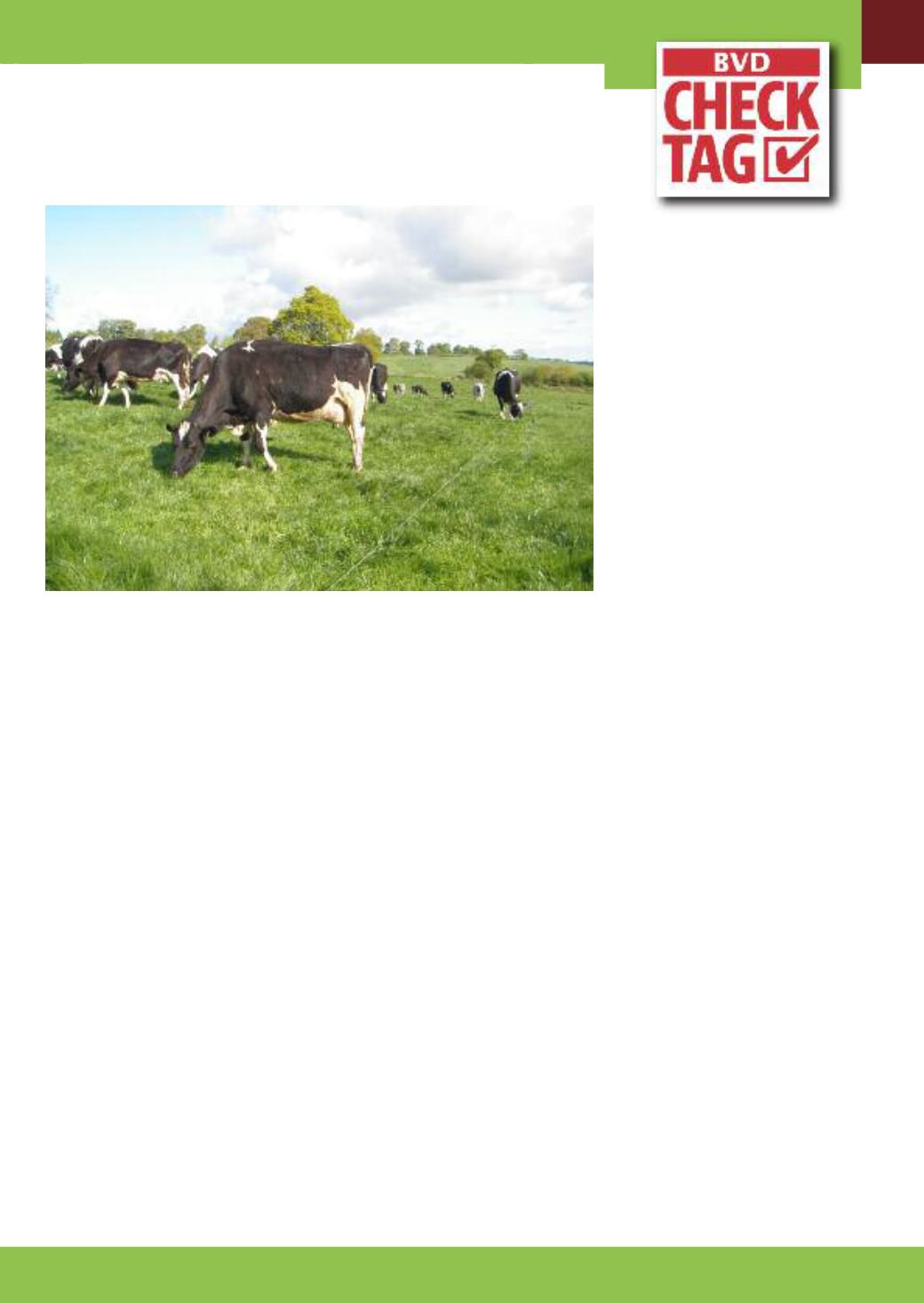
LIVESTOCK MATTERS - BVD SUPPLEMENT
during the first three months of
pregnancy, the animal is likely to give
birth to a PI calf.
“We started the PI hunt by taking
blood samples from the entire herd,”
explains Dan King. “This was done in
stages, alongside the TB test and
routine Johne’s disease testing that we
carry out annually. This helped to
minimise the time and disruption, but
ensured we had tested all the cows and
heifers as quickly as possible.
“As a result of the PI hunt, we
identified one heifer and her calf as
positive for BVD, and these were
removed from the herd immediately.
“We have also implemented routine ear
tag tissue testing for all new calves
born on the farm, for at least an 18
month period. This acts as a ‘safety net’
that will flag up any PIs born and
therefore highlight exposure to BVD or
the existence of other PIs within the herd.
“In addition, any cows that abort, have
dead calves, or fail to calve within 12
months will be tested for the BVD virus.
We shall also continue to carry out
regular testing of the bulk milk tank.”
The ear tag tissue testing done at Park
House Farm is being carried out under
the BVD Check Tag scheme, an
initiative introduced this year by XLVets,
of which Bishopton Veterinary Group
are a member.
“Identifying PIs, ideally shortly after
birth, can minimise the spread of BVD
and prevent exposure of other calves to
BVD virus by removing the PIs as soon
as possible,” explains Dan King.
The BVD Check Tag scheme is entirely
voluntary with farmers first having to
make the decision to use the tissue
sample testing technology to initiate
the process. Branded tags are available
from a number of suppliers, with tissue
analysis either done by the vet practice
or through a central laboratory,
depending on the type of tag used.
The cost is approximately £5-6/tag,
which includes the laboratory testing.
Once calves are tagged and the tissue
samples analysed, results are recorded
via the farm’s veterinary practice onto
a central BVD Check Tag database.
This online database – which is
accessible from any computer or smart
phone – will then provide verification of
all calves testing negative through the
scheme in the form of a certificate that
can be downloaded.
“The scheme is being piloted on
a significant scale through XLVets
member practices, but any farmer
(not only clients of XLVets practices)
can access the database,” adds Dan.
“The ultimate aim is that all veterinary
practices will participate in the scheme,
thereby allowing the branded tag to
become a universal symbol to promote
BVD awareness and prompt positive
action to remove PIs.”
At Park House Farm, improvements in
calf health are the first indication that
BVD is no longer an issue in the herd,
but ear tag tissue testing remains in
place as added reassurance.
BVD can spread from farm to farm across field boundaries, so it
is advisable to be vigilant and protect cattle.


